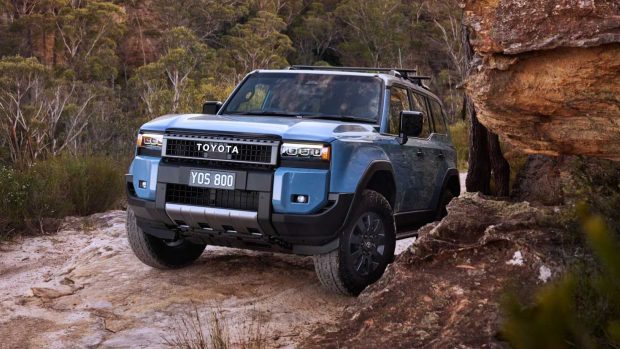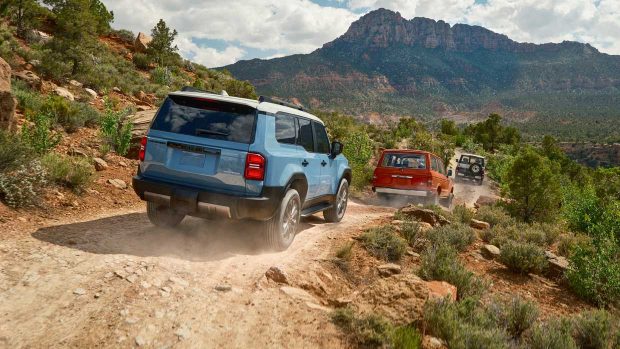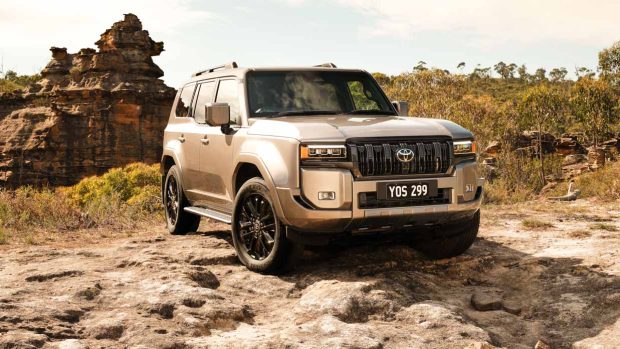-
Car Reviews
- Car News
-
Car Comparisons
Latest comparisons
- Chasing Deals
Toyota wants a Prado hybrid for Australia of some kind, but the numbers frankly aren’t looking good to bring the 2.4-litre turbo hybrid seen in the US version to our market
The new-generation Toyota Land Cruiser Prado 250 Series is available globally with a turbo petrol hybrid engine option, but a Prado hybrid is still not confirmed for Australian sales – and the reasons why have been revealed.
First, concerns exist that the Prado hybrid’s fuel economy and towing credentials are compelling enough to convince Australians to choose hybrid over diesel. Secondly, Toyota would need to sell large numbers of the hybrid to justify its costs to build the vehicle in right-hand drive – quite the conundrum.
A third and especially confounding problem is that the Prado hybrid sold overseas probably wouldn’t help Toyota lower its average CO2 emissions – a critical measurement under Australia’s new vehicle emissions standards (NVES) penalty regime that goes into force in mid-2025.
That’s because the hybrid engine Toyota developed for the Prado is focussed on power and refinement rather than cutting fuel economy – and so its consumption and CO2 emissions are broadly similar, or even a bit worse, than the mildly electrified four-cylinder diesel Aussies will get.
When the new Prado launches locally in mid-2024, Australians will only be able to purchase the four-wheel drive with a version of the old model’s 2.8-litre diesel four-cylinder engine with 150kW of power and 500Nm of torque – albeit with 48-volt mild-hybrid tech.
But in North America, the Prado comes standard with a 2.4-litre turbo petrol hybrid that makes 243kW of power and 630Nm of torque – all with the refinement and crispness of petrol over diesel.
The problems with the Prado hybrid? Fuel economy is around 10.0L/100km – similar to the diesel rather than a cut – and its towing capacity in the US market is just 2722kg. The diesel can tow 3500kg.
CO2 emissions levels, which will rapidly become a major deciding factor on which engines come to Australia, would be remarkably similar. The diesel has been rated at 209g/km, while the Prado hybrid emits 236g/km under US ratings, which are more pessimistic than Australian certifications.
As a result, America’s Prado hybrid would not make a valuable contribution to assisting Toyota Australia in reducing the brand’s fleet-average CO2 emissions used to calculate penalties for breach. The relevant limit for 4WDs will be 210g/km in 2025, 180g/km in 2026 and 150g/km in 2027.
Sean Hanley, Toyota Australia vice president of sales and marketing, told media today that while there is no technical problem with building the Prado hybrid in right-hand drive, there is a significant cost associated with kicking this process off.
As a result, Toyota Australia would need to convince headquarters in Japan that it could sell large numbers of Prado hybrids in our market – probably more than 10,000 per year. For reference, Toyota delivered 20,710 Prado units – all diesels – to Australians in 2023.
What that means is that to justify even adding the Prado hybrid to the local Toyota range, more than one in two Prado customers would have to change their preference to hybrid rather than diesel.
“If we want a right-hand-drive version of [Prado hybrid], we’d have to do serious [sales] volume of that model. That’s the only way you get [it],” said Hanley. “Therefore, its capabilities have got to be there for the Australian market.
“We are doing about 12,000 [Kluger sales] in a year, or thereabouts – so that is the kind of volume you need to do.”
Hanley believes that will only happen if there is a clear reason for buyers to choose the hybrid, as has been seen in the brand’s RAV4, Corolla, Camry and other lines. Another reason might be if Australia’s impending new vehicle emissions standards (NVES) penalty regime made a hybrid cheaper to sell.
Will that happen if the Prado hybrid doesn’t cut fuel consumption, doesn’t cut CO2 emissions, and can’t tow as much as the diesel model? Perhaps not.
“It’s actually a performance hybrid,” Hanley told Chasing Cars. “We’re investigating whether a performance hybrid, for what our Prado is used for, is the right drivetrain for this vehicle in this country.”
The kind of Toyota hybrids that Australian buyers are now buying in droves typically cut fuel consumption by 30 percent or more, compared to traditional petrol engines.
“I do see hybrid as a tangible alternative for [Prado] at some point, and I’d love to get hold of one. We just have to make sure it’s the right engine for the kinds of things people in Australia want to do,” Hanley said.
It’s possible that Toyota is looking to other full-hybrid solutions for the Australian-specification Prado – namely, a hybrid that would make more tangible gains on the key criteria of fuel economy and CO2 emissions.
That could take the form of a full-hybrid engine based on diesel power, or perhaps a more efficient turbo-petrol hybrid than the powertrain presently deployed in America’s Prado.
Toyota has committed to adding a hybrid version to every model line it sells in Australia by 2030.
Latest news
About Chasing cars
Chasing Cars reviews are 100% independent.
Because we are powered by Budget Direct Insurance, we don’t receive advertising or sales revenue from car manufacturers.
We’re truly independent – giving you Australia’s best car reviews.



